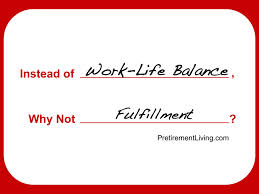 Most non-profit organizations have a very clear understanding of what they need from their board members, but there is a better question that needs to be asked. “Do you know what your board volunteers need from you?” This week and part of next week, we are focusing on board development questions at DonorDreams blog. Our next three posts look at a recent survey released by our friends at nonprofit technology research firm Software Advice of 1,545 board volunteers and people tasked with recruiting new board members. The survey’s key findings probably won’t surprise you, but the implications might change the way you think about your organization’s future board development efforts.
Most non-profit organizations have a very clear understanding of what they need from their board members, but there is a better question that needs to be asked. “Do you know what your board volunteers need from you?” This week and part of next week, we are focusing on board development questions at DonorDreams blog. Our next three posts look at a recent survey released by our friends at nonprofit technology research firm Software Advice of 1,545 board volunteers and people tasked with recruiting new board members. The survey’s key findings probably won’t surprise you, but the implications might change the way you think about your organization’s future board development efforts.
The first key finding of SoftwareAdvice.com’s survey was:
“Personal fulfillment is the most commonly cited benefit of serving on a board of directors (50 percent).”
The remaining 50% of responses were as follows:

Some of you might be wondering why these results matter. Simply stated, your board members need to get what they want out of their volunteer experience. If they don’t, then they won’t likely hang around your boardroom for very long.
Personal fulfillment
While most people will tell you they understand this concept, the reality is many of us struggle with this for the duration of our life on this planet.
Achieving a sense of personal fulfillment is a complicated success equation and is different for each us. The following factors are just a few things connected with this idea:
- setting and achieving personal and professional goals
- establishing a connection to something greater than yourself (e.g. community, God, volunteer board, etc)
- experiencing failure
- venturing into the unknown
- being recognized and appreciated
 I think Oprah wrapped all of this up best when she said:
I think Oprah wrapped all of this up best when she said:
“Real success means creating a life of meaning through service that fulfills your reason for being here.”
The reality is that many people have agreed to join your non-profit board of directors because they think it will add meaning to their lives. When you stop to think about this, it is mind-blowing at first and then it quickly turns into a daunting challenge.
Hopefully, this survey finding has you thinking about how your organization approaches board development and governance.
The following are just a few suggestions you might want to consider.
Be thoughtful on the front end
We’ve all been there . . . you have a few (or many) vacancies on your board, and you need to get them filled quickly. You ask for suggestions from the board. You set-up appointments with prospects. You put on your best smile and charm those people into saying ‘YES’ before they know what hit them.
Well, you got what you wanted. But will they get what they want? Have they even had an opportunity to think through what they want?
 Structure your board development process in a manner that allows the following to occur:
Structure your board development process in a manner that allows the following to occur:
- They get a chance to learn what you are all about
- They learn exactly what’s being asked of them
- You get a chance to learn what they are all about
- You have time to figure out what experiences will give them a sense of fulfillment
The reality is these objectives cannot be accomplished in one meeting. Consider including the following in your board development process:
- a tour of your programs and facilities
- a written volunteer position description
- time with other board volunteers (e.g. invitation to committee meetings and/or board meetings and meet-n-greets)
- sharing key governance documents (e.g. strategic plan, financial audit, resource development plan, budget, conflict of interest policy, commitment pledge, etc)
- Q&A opportunities
You’re asking an individual to join your non-profit family. You might consider doing this in a mindful manner.
Speaking of family . . . you might want to find a way to include your board prospect’s spouse and family in your board development process.
Recruitment and on-boarding future board prospects in this manner might help you make their board experience more fulfilling, which will increase the likelihood of keeping them around for a little while.
Why is ‘keeping them around‘ important?
Simply stated, “turnover” — regardless of whether it is staff turnover, donor turnover or volunteer turnover — is a damaging and expensive prospect. Looking at it through a relationship lens, how many donors and prospects do your board volunteers bring to the table? And how are those relationships damaged when a board member walks away from your organization unfulfilled and potentially frustrated with their experience.
Be thoughtful on the back-end
 I cannot tell you how many boards I’ve worked with on board development and governance projects push back on the idea of year-end board member evaluations.
I cannot tell you how many boards I’ve worked with on board development and governance projects push back on the idea of year-end board member evaluations.
I suspect the push back centers on the word “evaluation“. So, my advice is stop calling it that. I just sat through a wonderful board development presentation last week and the organization simply calls their board evaluations the “year-end sit-down” during which time the following questions are explored:
- How did the individual board volunteer contribute in the last year? (Note: this is all about thanking them profusely for those contributions)
- How did those contributions help the organization? (Note: this is all about showing them how their contributions support the bigger picture)
- How did those contributions align with board member roles/responsibilities expectations? (Note: this is all about acknowledging that you see them doing what they said they’d do when they first signed up)
- Were those contributions rewarding (aka fulfilling) to the board volunteer? (Note: This is about you listening and partnering with them on mindfully finding a sense of fulfillment and happiness in life)
- Where does the board member see him/herself contributing in the upcoming year? (Note: This is all about you meeting them where they are at and aligning the organizations needs to what they can contribute rather than vice versa)
These year-end conversations are a firewall for you. They provide an opportunity to thoughtfully check-in on whether or not the board member’s needs are being met. And if they aren’t, then you have time to make adjustments.
If you want to get a peek at what the next few blog posts will be about, you are welcome to check out SoftwareAdvice.com’s full survey report titled “Tech Skills and Other Considerations for Joining a Nonprofit Board IndustryView“.
Does your non-profit organization have a well-defined board development process? If so, please use the comment box below to share.
Here’s to your health!
Erik Anderson
Founder & President, The Healthy Non-Profit LLC
www.thehealthynonprofit.com
erik@thehealthynonprofit.com
http://twitter.com/#!/eanderson847
http://www.facebook.com/eanderson847
http://www.linkedin.com/in/erikanderson847

Mindfullness, it is like Omnipresent. Very cool post. Just like everything it is a two way street between the board and the agency,
Thanks, John. As you know, mindfulness has been on my mind a lot lately and it does show up in my posts from time to time. LOL